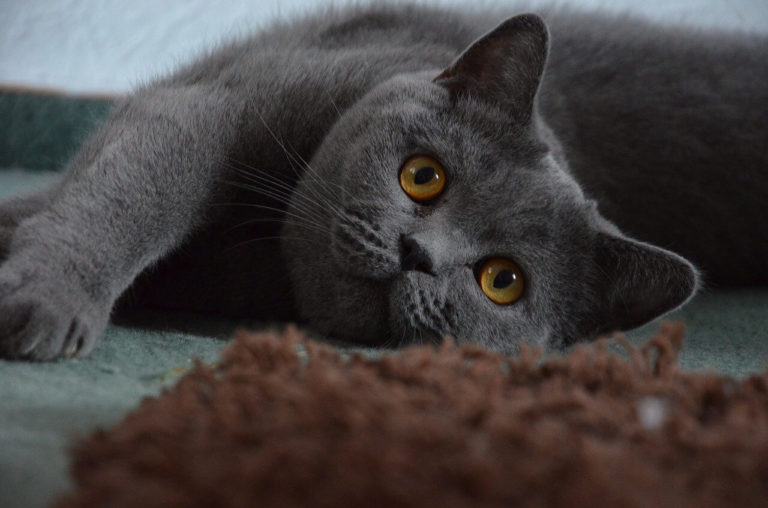PROFILE







Origin With Breed History
Opinions differ about the origin of the Persian cat. One assumes, however, that it originates from Iran (former Persia). The Persian cat probably originated from a cross between a Nordic longhaired cat and a Turkish Angora cat. This crossing also explains the typical long and soft coat.
In Iran or former Persia the Persian cat spread, which also got its name from its presumed country of origin.
The targeted breeding of Persian cats began about the middle of the 19th century in England. In the late 1970s, Persian breeding boomed, especially in the United States.
Breed Description
Quiet and reserved, this is probably the best way to describe the Persian cat. It has in contrast to other congeners, a weaker hunting instinct. This also affects their attitude.
Appearance Of The Persian Cat
At the beginning of Persian breeding, the color varieties were still limited. Black, white and blue. However, over time, the color spectrum has expanded. Nowadays almost all colors are possible. New colors like lilac or chocolate are now increasingly bred.
A stocky build, short legs and long coat are typical characteristics for the appearance of a Persian cat. It was only through various breedings that the flattened noses came into being. The snub nose has become another typical feature for Persians, which distinguishes them from other cat species. Regardless of this, the cats are bred in almost all coat colors and color shades.

Character And Temperament
One looks for a small bundle of energy in vain. The Persian cat is characterized by its calm nature. She is rather reserved, but still a lovable nature. She doesn’t really like long walks, but she loves to be stroked. All in all, a very cozy animal. And of course, like any other animal, she has her own mind. Even if they are a bit reserved towards strangers at first, Persians are still very people-oriented.
If you are looking for an active, temperamental cat, the Persian is not necessarily the right one. It is more characterized by calm, pleasant behavior. The Persian cat does not have the greatest urge to move, but still wants to be kept busy. A varied selection of suitable cat toys helps here
The trusting, relaxed character is super suitable as a family cat.
Attitude And Nutrition
As already mentioned, the Persian cat is a rather cozy contemporary without enormous urge to move. Accordingly, it is ideally suited for an attitude in the apartment. It gets along relatively well with children, as well as with other pets. She only needs to be given enough space where she can retreat as needed.
Basically, for the diet of any animal, the higher quality the better. Above all, you should pay attention to a balanced diet.
Expensive is not automatically always good. But it should also not be too cheap. Very cheap pet food is known to have a very low meat content. The meat may even be in the form of offal.
Cats need a lot of protein in their diet. The meat should also be the main component of the food. A meat content starting at about 60 percent is super. Since cats by nature generally drink little, they must not be fed exclusively with dry food. Always mix in enough wet food.
Education
The Persian cat is an extremely calm and frugal contemporary, which can hardly be upset by anything. Their balanced nature makes them a very pleasant cat for everyone. Their desire for freedom is very low compared to other cat breeds. For this reason, it is perfect as a house cat. The friendly cat loves to cuddle and cuddle because of its affectionate nature. However, it also has a mind of its own. Especially if something does not suit the Persian cat.
If you get your cat used to a consistent education from an early age, the further course will be relatively unproblematic.
Care
If you want to buy a Persian cat, you should be aware of the complex care of the coat. Quite clearly, if you look at their coat. The long coat tends to mat and knot. Therefore, it should be brushed daily in any case. Ideally, you will find time for it once a day. It is even better to get your cat used to it at an early age. If the long coat of the Persian cat should be matted, the cat must even be shorn. But don’t worry, the shaved fur will grow back quickly. The Persian cat also loses part of its fur all by itself. During the shedding season, the cat loses an immense part of its mane despite combing and brushing.
A tip, cat grass and malt paste can help with the natural shedding of swallowed hair and also prevent blockages.
Due to the short nose, the Persian cat needs additional cleaning of the eyes and nose area. Here you can simply use a damp cloth, because chamomile tea can continue to irritate the area around the eye. The food intake of some Persian cats is also somewhat unusual. Because of the flat face, some cats are forced to pick up food with their tongues. Food with a mushy consistency is therefore easier for them to eat than, for example, large chunks of meat.

Health And Typical Diseases
Although the history of the Persian cat goes back to problematic breeding, it can remain healthy for a relatively long time with good nutrition, good husbandry and intensive care. However, as always, there are some exceptions. The breed is particularly prone to polycystic kidney disease as well as progressive retinal atrophy, a curvature of the retina that can even lead to complete blindness.
These diseases are all hereditary and illustrate the importance of choosing the right breeder. After all, diseases can be detected by looking at the pedigree. Professional breeders have their breeding animals and their offspring tested for diseases at an early stage and exclude affected animals from breeding if necessary.
Life Expectancy Of The Persian Cat
Of course you want your little darling to live as long as possible. The average life expectancy of a Persian cat is about 13 to 18 years. Of course, this is only true under certain circumstances. Because according to this it can also happen that a Persian cat can live shorter, but also a little bit longer. In fact, it is not uncommon that the cats can live even more than 20 years.
Unfortunately, it can always happen that pets unexpectedly suffer from diseases. But to counteract this, you can do a few things.
Accordingly, it is very important that you pay attention to the diet of your cat. As already mentioned, it is necessary to make the food as healthy and balanced as possible. Pay attention to a high meat content and avoid additives such as sugar or flavor enhancers.
Although the Persian cat is not necessarily known for its urge to move, but rather spends its time indoors, sufficient exercise is still very important. If your cat is fed too much food, especially one with a high energy content, it is possible that it may become overweight due to too little exercise.
With its average age, the Persian cat is also in the rough average of all domestic cats. Whether the cat is an outdoor cat or kept indoors also contributes to its life expectancy.
Incidentally, cats kept indoors live about three to five years longer than outdoor cats.
Buying A Persian Cat
If you have decided on a Persian cat as your future pet, you have two options. Either you go to a breeder, where you can get an insight into the pedigree to determine possible diseases or you look around in the shelter. There can be many different reasons why an animal is given to a shelter. It is best to make up your own mind and avoid prejudices.
There you have the possibility to give the animals a better life.
Decision Support
The Persian cat is suitable especially for those people who like to spend a lot of time with their pet. This cat breed is known for its cozy, affectionate nature and needs a lot of attention from you.
The cat by nature does not have an enormous urge to move, and is therefore ideally suited as a house cat. Nevertheless, you should pay attention to enough movement to avoid overweight. If you have chosen a cat as a pet, you are now responsible for its health. Accordingly, it is important to pay attention to a healthy, balanced diet, as well as to spend enough time with your cat.
A wide range of cat toys and a scratching post are the best ways to keep your cat occupied.
Sources
https://www.mein-haustier.de/katzenrassen/perserkatze/
http://die-perserkatze.de/lebenserwartung/
https://www.fressnapf.de/ratgeber/katze/rasseportraits/perserkatze
https://www.zooplus.de/magazin/katze/katzenrassen/perserkatze












